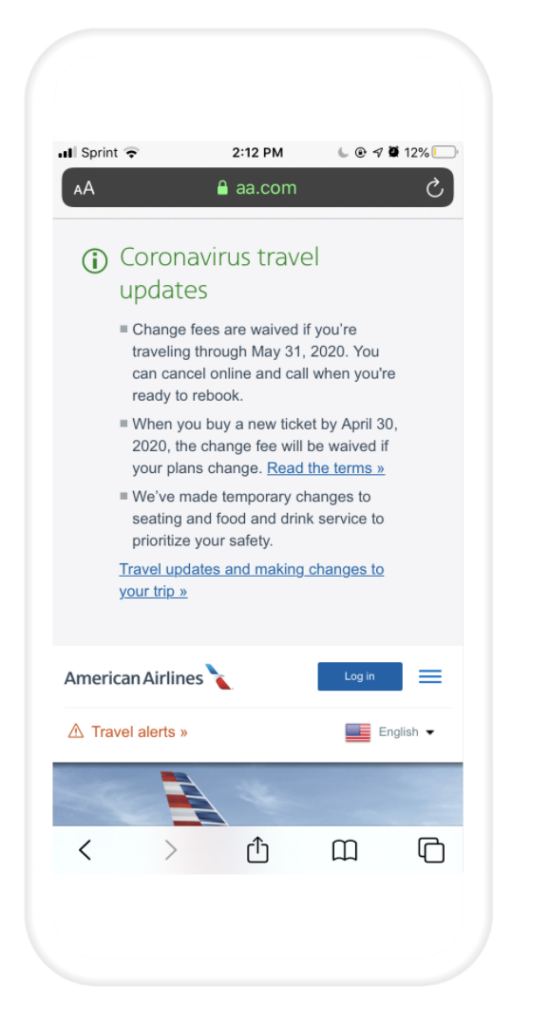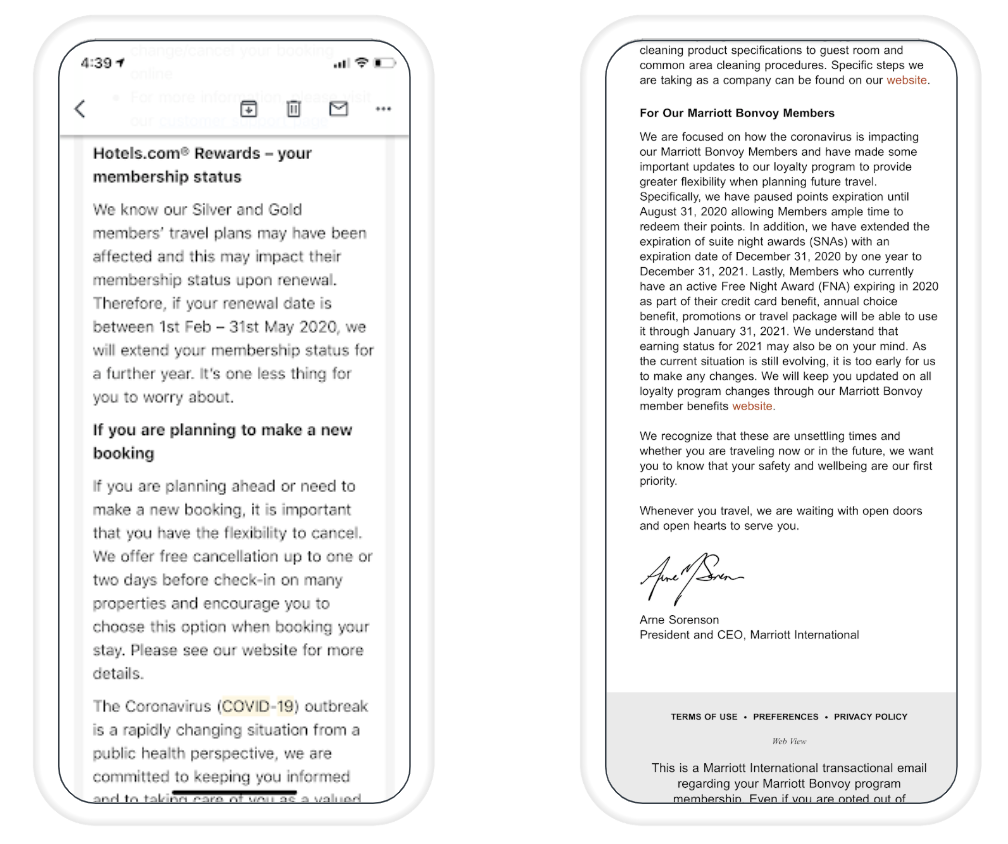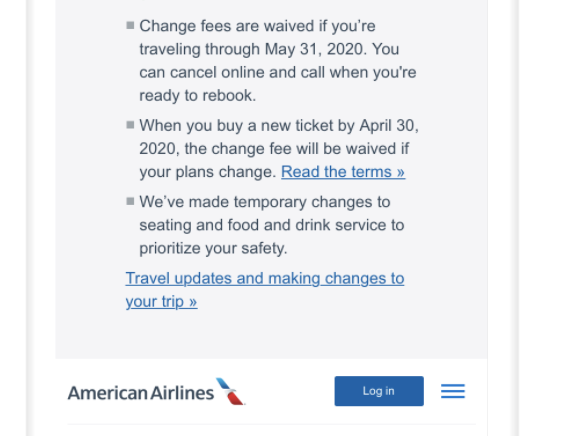We all know that right now is an unprecedented time in history. A common challenge businesses face is how to keep going in spite of the difficulties, but among these challenges come unique opportunities and solutions to build relationships and address customer pain points.
The travel, hospitality and events industries are particularly being hit hard with this catastrophe. With COVID-19 requiring people to physically distance themselves, an obvious consequence is a massive drop in flight and lodging bookings, as well as a drop in attendance and cancellation for events like business conferences and concerts.
Amidst these harsh realities, leaders in these hard-hit industries are still finding ways to push through that will ultimately reward not only their business but their customers. We discovered from a recent roundtable some moves that leaders in the travel, hospitality and events industries are making that you can implement during this challenging time*:
1. Change Your Focus to Helping Customers
Instead of focusing on sales, change your mindset to going above and beyond in helping your customers. Consider adjusting your tone: empower them with knowledge and confidence to make decisions at this time. For example, one online booking platform has shifted from focusing on booking activities to actively helping out customers staying at their hostels who could be stranded at their current location. This company is currently communicating with customers about sanitary measures and nearby medical facilities, and communicating to other hostels to accommodate rapidly changing needs, such as creating private dorm rooms. They are also keeping customers engaged by creating a travel wishlist feature to keep people excited about future travels.
Another way to help your customers in the travel, hospitality, and events space is to make your cancellation process easier, focusing on customer support, making certain products free, and proactively communicating to customers that you desire to help them and meet their needs. Some examples of this are travel companies allowing customers to postpone trips rather than be forced to cancel, and suggesting tips and tricks for coping with lockdown to keep people socially engaged with the company.

American Airlines’ home screen updates customers on new changes and policies aimed a customer safety, as well as flexibility regarding flight cancellations.
Many airlines and hotels are also extending loyalty services beyond this year as people cancel travel, as shown by a message from Marriott:

Marriott’s message to its customers.
Case in point: being there for a customer in their time of need will in turn foster loyalty that will last even beyond this pandemic.
2. Integrate Online Assets
In the wake of physical distancing, increasing your online presence is vital. Find new ways to integrate online assets into your business. For instance, an invitations website noticed the rise in popularity of Zoom and Google Hangout for people to connect with each other. They then added a video feature to their invites for people to invite each other to connect online. Another website implemented banners for business owners to announce changes in hours or update their status in light of new changes. This website has also been encouraging businesses to opt into virtual services such as online consultations, such as non-essential medical services setting up video consultations with patients. It’s now more important than ever to implement digital transformation and connect with customers online.
For example, this dermatology clinic is offering virtual consultations for patients without compromising the quality of service or care they provide to patients:

The dermatology clinic’s page offering virtual consultations.
3. Conduct User Research
Speaking of connecting with customers online, conducting user research is a great way to accomplish that. This is a good time to learn from users because they’re ready to share their experience, their pain, and connect with you. In fact, performing user research itself is resonating with users because they want to talk about what they’re feeling and experiencing. This is also a great method to gain insight into customer pain points so you can improve your users’ experience.
One online travel company that spoke to and surveyed their users found that users were understanding about how businesses and services would be impacted, but were emotionally affected. From their learnings, the company then decided to meet travelers where they are in their current situation to help them make good decisions regarding travel in the midst of new regulations. Other companies are conducting moderated and unmoderated interviews and surveys.
4. Use This Time to Implement New, Positive Changes
Going along with conducting user research, take this opportunity to implement changes your customers would like to see. Currently, many companies in the travel, hospitality, and events vertical are focusing on fixing current pain points so that when things are more stable, the customer experience will be vastly improved. This includes introducing new programs that benefit customers; for example, one travel company introduced a new loyalty program where either a direct refund can be issued for travel expenses or can be refunded in form of e-wallet points with a two-year expiration equivalent to the refund so that the customer has those points stored for later travel with the company. The e-wallet points even give the customer an extra 5-10% of points on top of the refund amount.
Another company is conducting customer research about how their efforts to help customers are succeeding and adjusting priorities and actions based on that feedback. For instance, customers needed to cancel bookings, so the company published help articles to show how to cancel bookings step-by-step. By creating a centralized resource to solve a problem customers were experiencing, the business is able to have a positive impact on the customer despite the issues they’re facing.
5. Revisit Your Stack
Use this time to consider your company’s digital transformation strategy, which is more important than ever now that a larger amount of business and communication is conducted online. For example, a hospitality company is currently working on its app to improve its users’ experience through personalization. Updating your current technology will help ensure that you’ll be ahead of the curve when this period is over, and will delight your customers.
How can you improve your users’ journey and experience at this time? Fix broken flows by connecting users across platforms, devices, and channels, personalize your user experience, and use deep links to bring users where they really want to go. Making the user experience seamless will in turn increase their affinity for and interactions with your brand, as well as increase your ROI and open rates. Branch recently conducted an experiment with a customer that compared how the use of Branch deep links vs. legacy deep links affected their overall ROI:

The effects of deep linking with Branch compared to legacy deep linking when performing an experiment with a customer.
Although this current climate is certainly presenting challenges to both customers and businesses, it’s no reason to remain stagnant. Making thoughtful decisions for your business and your customers is key to weathering the current storm, and will prove fruitful when it blows over, or when the next one comes. By maintaining relationships, being empathetic and understanding, and going above and beyond to help your customers, you can maintain the strength to come out of this crisis even better than before.
*Company names redacted for privacy reasons.
























